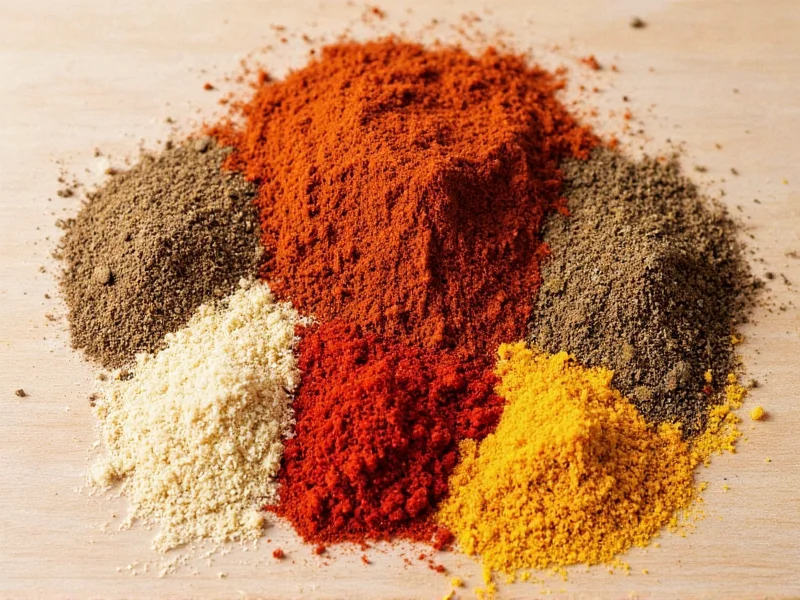Yes, pure, single-ingredient spices are naturally gluten-free as they come from plant sources that don't contain gluten. However, cross-contamination during processing or added ingredients in spice blends can introduce gluten. Always check labels for gluten-free certification if you have celiac disease or severe gluten sensitivity.
The Truth About Spices and Gluten
Understanding whether spices contain gluten is crucial for those managing celiac disease or gluten sensitivity. While the simple answer is that pure spices are gluten-free, the reality involves important nuances that could impact your health.
Why Pure Spices Are Naturally Gluten-Free
Spices originate from plant materials—seeds, fruits, roots, barks, or other vegetable substances—that don't naturally contain gluten. Gluten is a protein found only in wheat, barley, rye, and their derivatives. Therefore, a single-ingredient spice like pure cinnamon, cumin, or turmeric contains no gluten in its natural state.
How Gluten Can Enter Your Spices
Despite their natural gluten-free status, several factors can introduce gluten into spice products:
Cross-Contamination During Processing
Many facilities process both gluten-containing products and spices on shared equipment. Even microscopic traces can trigger reactions in sensitive individuals. This risk is particularly high in facilities that handle wheat-based products alongside spices.
Added Ingredients in Spice Blends
Pre-made spice blends often contain anti-caking agents or fillers that may include gluten. Some traditional blends like curry powder, chili powder, or taco seasoning sometimes use wheat flour as a thickener. Always read ingredient lists carefully.
Bulk Bin Contamination
Purchasing spices from bulk bins poses significant risk. Shared scoops and airborne flour particles from nearby bins can contaminate supposedly gluten-free spices. This represents one of the highest-risk scenarios for gluten exposure.
| Spice Type | Gluten Risk Level | Key Considerations |
|---|---|---|
| Single-ingredient pure spices | Low (when certified) | Check for gluten-free certification; pure forms are naturally gluten-free |
| Pre-mixed spice blends | Medium to High | Often contain anti-caking agents; read labels carefully |
| Bulk bin spices | High | Avoid due to cross-contamination risk from shared scoops |
| Certified gluten-free spices | Very Low | Tested to less than 20ppm gluten; safest option for sensitive individuals |
How to Ensure Your Spices Are Truly Gluten-Free
For those with celiac disease or severe gluten sensitivity, taking these precautions is essential:
Read Labels Meticulously
Look beyond the "gluten-free" claim on the front. Check the full ingredient list for hidden sources of gluten like "spice blend," "natural flavors," or "modified food starch" which could indicate wheat derivatives.
Seek Certified Gluten-Free Products
Certification from organizations like GFCO (Gluten-Free Certification Organization) ensures products contain less than 10 parts per million (ppm) of gluten. This certification involves rigorous testing protocols that go beyond simple label claims.
Understand Labeling Terminology
Phrases like "processed in a facility that also processes wheat" indicate potential cross-contamination. While not a guarantee of gluten presence, this warning should prompt caution for highly sensitive individuals.
Consider Brand Transparency
Reputable spice companies often provide detailed information about their gluten testing procedures. Brands that openly discuss their manufacturing processes and testing standards typically offer more reliable gluten-free options.
Special Considerations for Dining Out
Restaurant spices present unique challenges. Chefs may use bulk containers with shared scoops, and many commercial spice blends contain gluten. When dining out, specifically ask if spices are certified gluten-free or processed in dedicated facilities.
Creating Your Own Safe Spice Blends
For maximum control, consider making your own spice blends using certified gluten-free single-ingredient spices. This approach eliminates the risk of hidden gluten in commercial blends. Store your homemade blends in clearly labeled containers to prevent cross-contamination in your kitchen.
Testing Your Spices for Gluten
For those extremely sensitive to gluten, home testing kits are available that can detect gluten down to 5-10 ppm. While not perfect, these provide an additional layer of security when using spices from uncertain sources.











 浙公网安备
33010002000092号
浙公网安备
33010002000092号 浙B2-20120091-4
浙B2-20120091-4